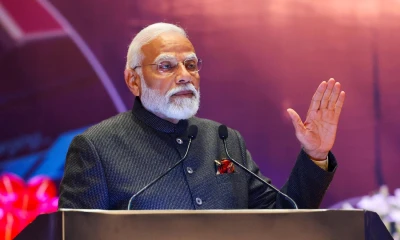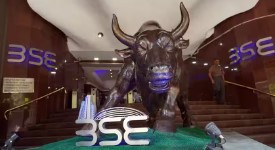Edited by Deepali Verma
Prime Minister Narendra Modi announced a new scheme under which 1,000 modern resting facilities for truck and cab drivers on national highways will be constructed in line with the government’s ease of living policy on February 2.
In a conversation at Bharat Mobility Global Expo 2024 at Bharat Mandapam in New Delhi, PM Modi discussed the hardships faced by drivers while on long-distance journeys. He said that under the first phase, 1,000 modern buildings with facilities for food, clean drinking water, toilets, parking and rest will be developed for drivers on all national highways.
“The government both addresses and understands the concern of truck drivers and their families,” he said, adding that the scheme was meant to enhance both the ease of living and ease of travelling for truck and taxi drivers. Hence, improving their health and also helping in preventing accidents.
As per the NITI Aayog reports, trucks carry a bulk of Bharat’s goods meeting 70% of domestic freight demand. “With the increasing road freight travel, the number of trucks is expected to more than quadruple, from 4 million in 2022 to roughly 17 million trucks by 2050,” the report ‘Transforming Trucking in India’, published in September 2022 said. It is essential for long-haul truck drivers to need proper sleep and naps to remain alert on the road to avoid accidents. Sleep deprivation is the key reason for road accidents.
PM Modi remarked that the Bharat Mobility Global Expo 2024 had brought the entire mobility and supply chain community on a singular platform. Emphasising the goal of Viksit Bharat by 2047, the Prime Minister stressed on the pivotal role of the mobility sector. “Bharat is on the move and is moving fast,” he said, highlighting the creation of opportunities for the mobility sector.
He said that the Bharatiya economy was growing at a rapid pace and Bharat is set to become the third-largest economy in the world during his government’s third term. He informed that the 250 million people have been lifted out of poverty in the last decade, they are the new customers of various modes of transport. Once a person breaks out of poverty, the means of transportation can be a cycle, two-wheeler or a four-wheeler, becoming their first requirement, he said as he stressed on the emergence of a neo-middle class.
Growing income of the middle class strengthens the mobility sector of Bharat, he said, “The numbers of the growing economy and income are bound to infuse new confidence in the mobility sector”, he added. He said the number of cars sold in Bharat rose from 120 million to more than 210 million from the 10 years before 2014 to after 2014, while the number of electric cars sold in Bharat rose from 2,000 per year about 10 years ago to 12 lakh per year today.
The National Electric Mobility Mission is pushing manufacturing of Electric Vehicles, as remarked by PM Modi. The government had made an approx investment of ₹10,000 crore for creating demand for electric vehicles and the FAME scheme has led to electric buses in the capital and in many other cities, he said.
The fund allocation of ₹1 lakh crore has been made in this year’s budget to encourage research and innovation and also mention the decision to further expand the tax exemptions given to startups. “These decisions will come up with new opportunities in the mobility sector,” he said. Discussing the most significant challenges of cost and battery in the EV industry, the PM made a suggestion to use these funds in its research.

















